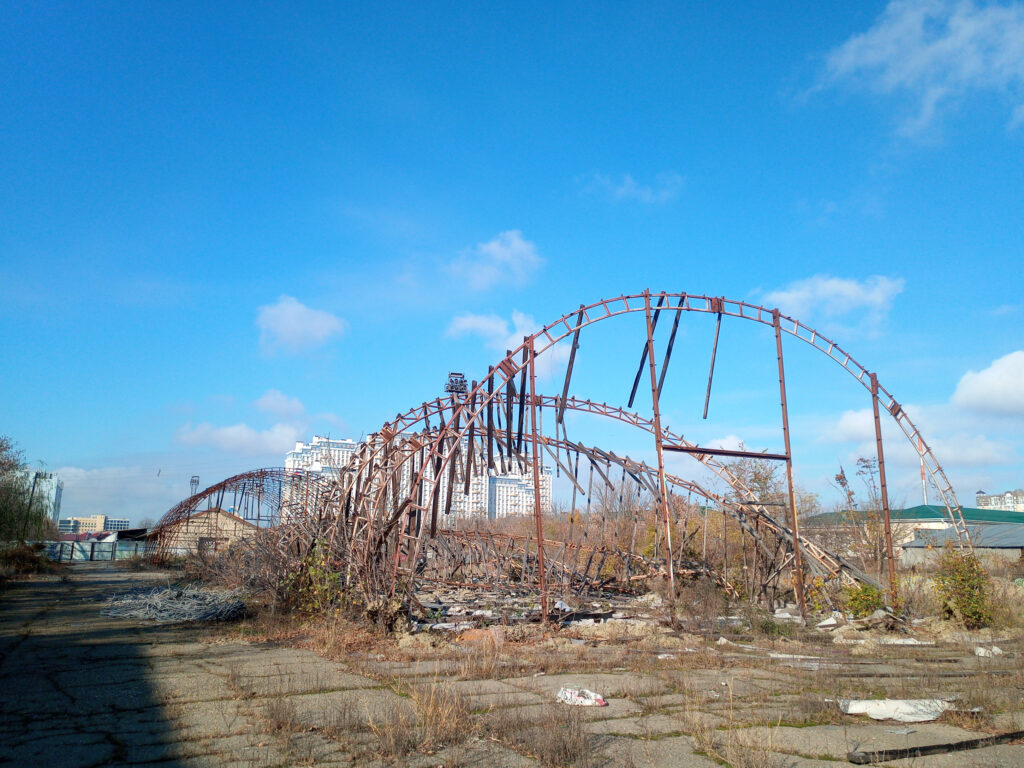The future of city architecture looks “cool.”
Climate change. Many people talk about it, and as Western nations, our governments tell us they are looking at ways to combat it. No one talks about how the BAS industry will deal with things.
We know that cities full of glass, metal, and asphalt increase the ambient air temperature within those cities. That has never been a secret, but now, the problem of cooling cities comes to the top of the pile.
How do we efficiently cool cities without using fossil fuels to provide the power to do so? That question leads to the answer of solar, wind, water, and fusion.
That is one question. The other question is what BAS innovators do about problems like the one in Honolulu. Climate change caused a massive fire that wiped out homes, businesses, and livelihoods. The West Coast of North America (BC specifically) will experience temperatures from mid-30 degrees Celsius to 44 degrees Celsius. How does a typically sub-artic climate deal with these issues? Well, the natural answer is that we “chill out.” We add air conditioning and cooling areas. The question that I have is, is that enough?
What we know:
As cities worldwide continue to face the challenges of the Urban Heat Island (UHI) effect, there is an urgent need to develop comprehensive heat coping strategies. Urbanization and the extensive use of heat-absorbing materials have contributed to the phenomenon, making exploring innovative approaches to enhance urban heat resistance crucial. In addition to leveraging Industrial DataOps Practices, effective Asset Management is vital in making cities more heat resistant by optimizing resources and infrastructure for sustainable, climate-resilient urban environments.
The Urban Heat Island Effect: A Growing Concern
The UHI effect arises from modifying land surfaces due to human activities, causing urban areas to experience higher temperatures than their rural surroundings. Buildings, concrete structures, and asphalt absorb and retain heat, creating hotspots that exacerbate the UHI effect. The resulting higher temperatures pose significant challenges, including increased energy demand, air pollution, health risks, and reduced overall livability.
This is especially significant in the affected areas of Hawaii, where settlers introduced non-native species of grass and plants. These plant species are not accustomed to the rapid rise in temperatures and provide a “tinder box” for potential fire disasters like the one we currently see.
The Role of Asset Management in Urban Heat Resilience
Asset Management is a systematic and data-driven process that involves optimizing physical assets’ performance, lifespan, and value. By applying Asset Management principles to urban infrastructure, cities can strategically allocate resources to enhance resilience, reduce environmental impact, and tackle the UHI effect. The following points highlight the value of Asset Management in making cities more heat-resistant:
a. Infrastructure Planning and Prioritization: Effective Asset Management enables cities to assess the condition and performance of existing infrastructure. By understanding the strengths and weaknesses of assets, city planners can prioritize upgrades and replacements to integrate heat-resistant materials and technologies into new and existing structures. If city planners do not start considering these factors, then we look at continued mass disasters, or society will start to look at adopting the Stephen King theory of “Living under the Dome.”
b. Data-Driven Decision Making: Asset Management uses data collection and analysis to inform decisions. Cities can utilize data to identify areas prone to heat accumulation, assess the impact of potential heat-resistant initiatives, and allocate resources efficiently for maximum impact. Floods and fires can have a limited impact on cities if city planners pay attention to the data that is collected from assets all over the city. Not much happens on our planet without a little warning. If city planners have a better analysis of the data streams coming in from sensors, imagine how many disasters may be averted. To take the disaster in Hawaii as an example, there have been reports that the communication network failed to meet the response of getting the evacuation notice out. Redundancy can’t be overstated when it comes to critical systems, and recent events have illustrated that no systems are safe from failure and that the loss of human life due to system failure is unacceptable. We need to do better.
c. Life Cycle Assessment: Asset Management practices emphasize life cycle assessments, considering the environmental impact of assets from production to disposal. Cities can minimize the UHI effect and reduce their carbon footprint by choosing sustainable and heat-resistant materials.
d. Maintenance and Monitoring: Regular asset maintenance is essential to prolonging their lifespan and ensuring optimal performance. Implementing heat-resistant measures requires continuous monitoring to address any emerging issues promptly.
e. Energy Efficiency and Resource Optimization: Asset Management seeks to optimize energy consumption and resource usage. By incorporating energy-efficient technologies and renewable energy sources, cities can mitigate heat while reducing greenhouse gas emissions.
Implementing Heat-Resistant Asset Management Strategies
a. Cool Pavements and Surfaces: Asset Management can drive the adoption of heat-reflective and porous materials for pavements, roads, and walkways. These surfaces absorb less heat, contributing to a cooler urban environment.
b. Sustainable Building Materials: Leveraging Asset Management, cities can invest in sustainable and heat-resistant building materials, such as cool roofs, green walls, and energy-efficient windows. These measures can reduce indoor temperatures and overall energy consumption.
c. Smart Infrastructure: Integrating smart technologies into infrastructure enhances Asset Management by enabling real-time monitoring and data collection. This data aids in identifying vulnerabilities, ensuring timely maintenance, and optimizing asset performance to mitigate the UHI effect. Typically, cities in North America like Edmonton, AB (one of the coldest cities in North America) have been gathering data with regards as to how to heat homes and keep infrastructure from freezing. With global warming, the problem now switches to keeping cities cool and resistant to fires, power outages etc.
d. Green Infrastructure and Urban Greening: Asset Management supports the creation of green spaces, vertical gardens, and urban forests. Vegetation helps shade buildings and pavement, reducing heat absorption and improving air quality.
e. Water Management Solutions: Efficient water management, including rainwater harvesting and green-blue infrastructure, can help cool cities through evapotranspiration and reduce water runoff. Water is the essence of life. We need clean and purified sources in all aspects of our lives. Our wastewater is extremely important, and freshwater is continually identified as a critical resource. Living on the Pacific Ocean coast, I feel we have a salt problem rather than a pure water problem. Respecting the balance of the planet is something that humanity has constantly struggled with. Looking to the future, we must consider that all our resources are finite rather than infinite. In my opinion, the effective recycling of human wastewater into purified drinking water is a huge step in the right direction toward the sustainability of the planet.
In the face of escalating heat-related challenges, cities must continue to adopt a multi-faceted approach to enhance their heat resistance. Combining Industrial DataOps Practices with strategic Asset Management enables cities to make informed decisions, allocate resources effectively, and implement sustainable and heat-resistant initiatives. By embracing innovative technologies and materials, cities can work towards becoming more resilient, liveable, and heat-resistant urban environments for current and future generations.
When you think about it, the future must look “cool” amidst rising global temperatures.



